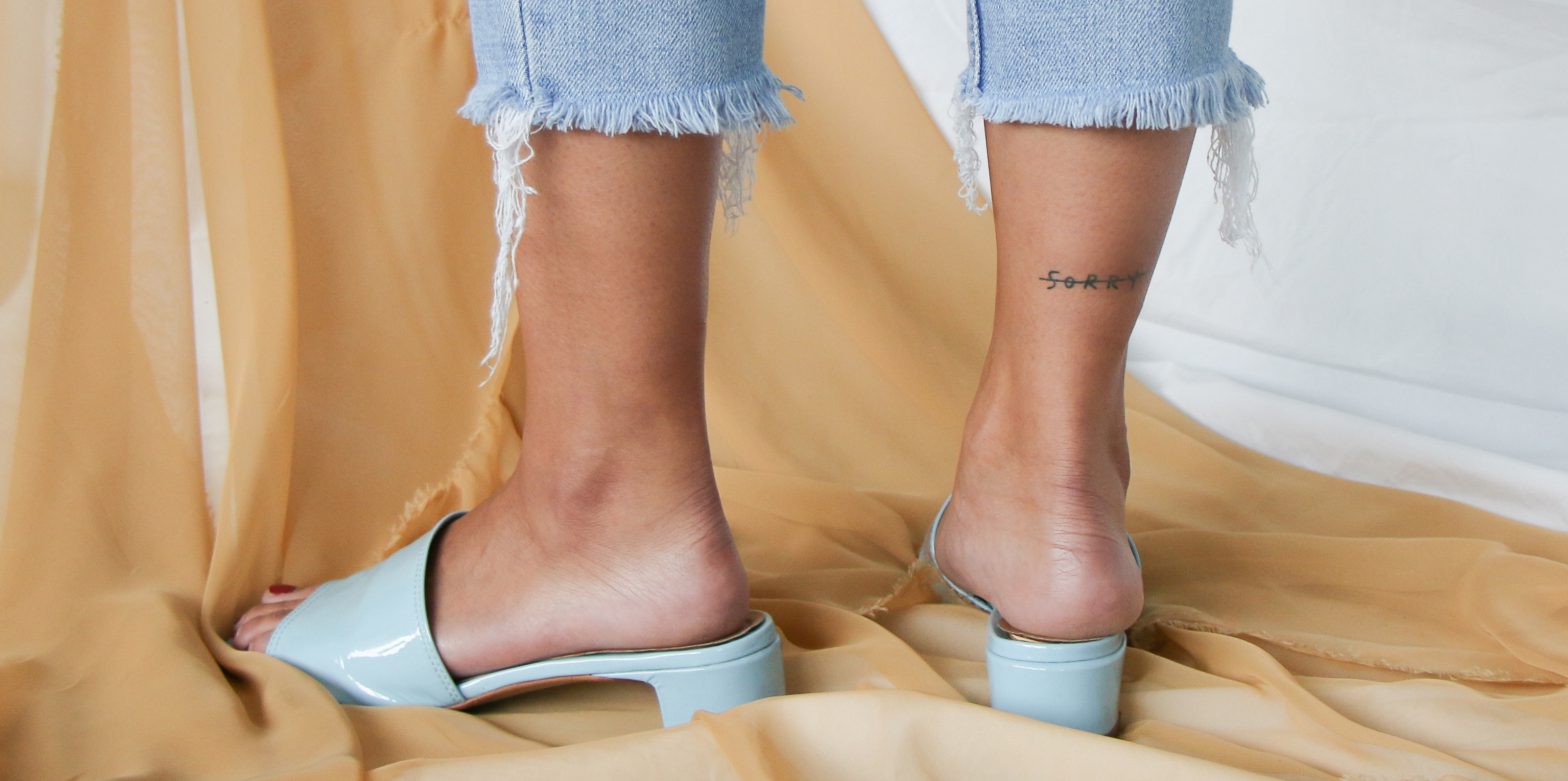If you’re considering getting an ankle tattoo, you’re in good company. Ankles are an increasingly popular location for ink, especially among tattoo first-timers, because ankle designs are relatively small and inexpensive, and can normally be completed quickly (which means getting one doesn’t require you to sit through an hours-long tattoo session). Still, even small, quick tattoos can hurt to have inked, and your ankles aren’t safe from that discomfort.
How much an ankle tattoo hurts, like all tattoos, varies from person to person. Jessica Valentine , resident artist and co-owner of Haven Studio in Brooklyn, explains that everybody has a different pain threshold, making it impossible to say just how much pain a particular tattoo placement will inflict. Over the course of her 12-year tattooing career though, she’s learned that when it comes to ankle ink there are some patterns around pain—what hurts most and why—that generally hold true.
Ankle tattoo hurt factor: exact location
Compared to other parts of the body, ankles are usually to be one of the more uncomfortable places to get tattooed according to Dr. Bruce Katz, Clinical Professor of Dermatology at the Icahn School of Medicine at Mount Sinai and Director of the JUVE Skin & Laser Center in Manhattan. He explains that “while pain is relative, tattoos hurt most in areas where the skin is thinner—the ribs, wrist, chest and lower legs, for example, which include the ankles and feet.”
Valentine emphasizes that certain parts of the ankle tend to be more sensitive to pain than others. “The outside of the ankle, because it’s closer to the ankle bone, is prone to discomfort,” she says, “while the inside of the ankle is one of the easier spots.”
A large number of tattoo artists, herself included, she says, practice tattooing on their own bodies before ever inking someone else, and many of them use their inner ankle as the canvas because it’s easy to access and not terribly painful. Although the ankles are a bony area of the body which she finds normally heightens pain, the inner ankle is its fleshiest bit, making it less sensitive and prime for poking.
In contrast, “the front and back of the ankle are typically painful locations for tattoos because they’re spots that you often bend,” she says. “Areas of the body that see a lot of day-to-day action from bending or rubbing—your inner and outer elbows and the back and front of your ankles, for example—are going to be more tender and as such, a lot more sensitive.”
Ankle tattoo hurt factor: style and complexity of design
Getting a small, full color tattoo on your outer ankle will very likely hurt more than getting a medium-sized, minimal design inked on a less sensitive part of the body because, according to Dr. Katz, “when it comes to tattoo pain, placement is the main determinant of how you’re going to feel”. If you’ve settled on getting ankle ink though, there are a few factors aside from placement, primarily style and complexity, that can help you figure out how much the tattoo could hurt.
“A tattoo with light shading will probably be less uncomfortable than a design with thick lines, which will probably be less uncomfortable than something with heavy shading or full color,” says Valentine. “When you get a tattoo, your artist is changing the color of your skin by inserting ink into it using a needle, and that creates an open wound,” she explains. “Full colour or heavily shaded designs require the artist to go over the same area with the needle multiple times, which leads the skin to suffer greater trauma than it would with a simpler design because the needle is puncturing an open wound again and again.” The more an artist has to go over the same area, she says, the more getting the tattoo is going to hurt, especially if it’s in an area that is already highly sensitive such as the front, back, or outside of the ankle.
Ankle tattoo hurt factor: the use (or lack thereof) of numbing cream
Our bodies crave comfort, so when anything painful happens to us—whether that’s breaking an arm or getting tattooed—it responds by releasing endorphins to naturally relieve it. Valentine has found that for many of her clients and in her own experience getting tattooed, the first few minutes, before endorphins kick in, are the most uncomfortable, but after that the process doesn’t hurt as much as many people expect.
“I’m about 89 percent covered and I still dread that first puncture of the needle, but your body quickly acclimatizes to the pain,” she says. “Endorphins typically kick in after about ten minutes, so those first few minutes are the most likely to hurt, but then it’s relatively smooth sailing.”
If you’re still worried about the pain though, Katz recommends contacting your dermatologist ahead of your tattoo appointment and having them prescribe a topical anesthetic, although before you do this you should reach out to your tattoo artist to make sure they’re comfortable with numbing agents. “There are a number of easy-to-use numbing creams which make use of the popular numbing agent lidocaine,” he says, and these can be applied directly to the skin “to reduce the discomfort of the tattooing process.”
Not ready to go under the needle? Consider an Inkbox Tattoo, which looks like a permanent tattoos but only lasts for one to two weeks, fading naturally over that period of time. Just a heads up, Inside Out is powered by the folks at Inkbox. It’s all part of our shared mission to empower you to tell your unique story, be it for now or forever.
Related: How Much Do Ankle Tattoos Cost?

